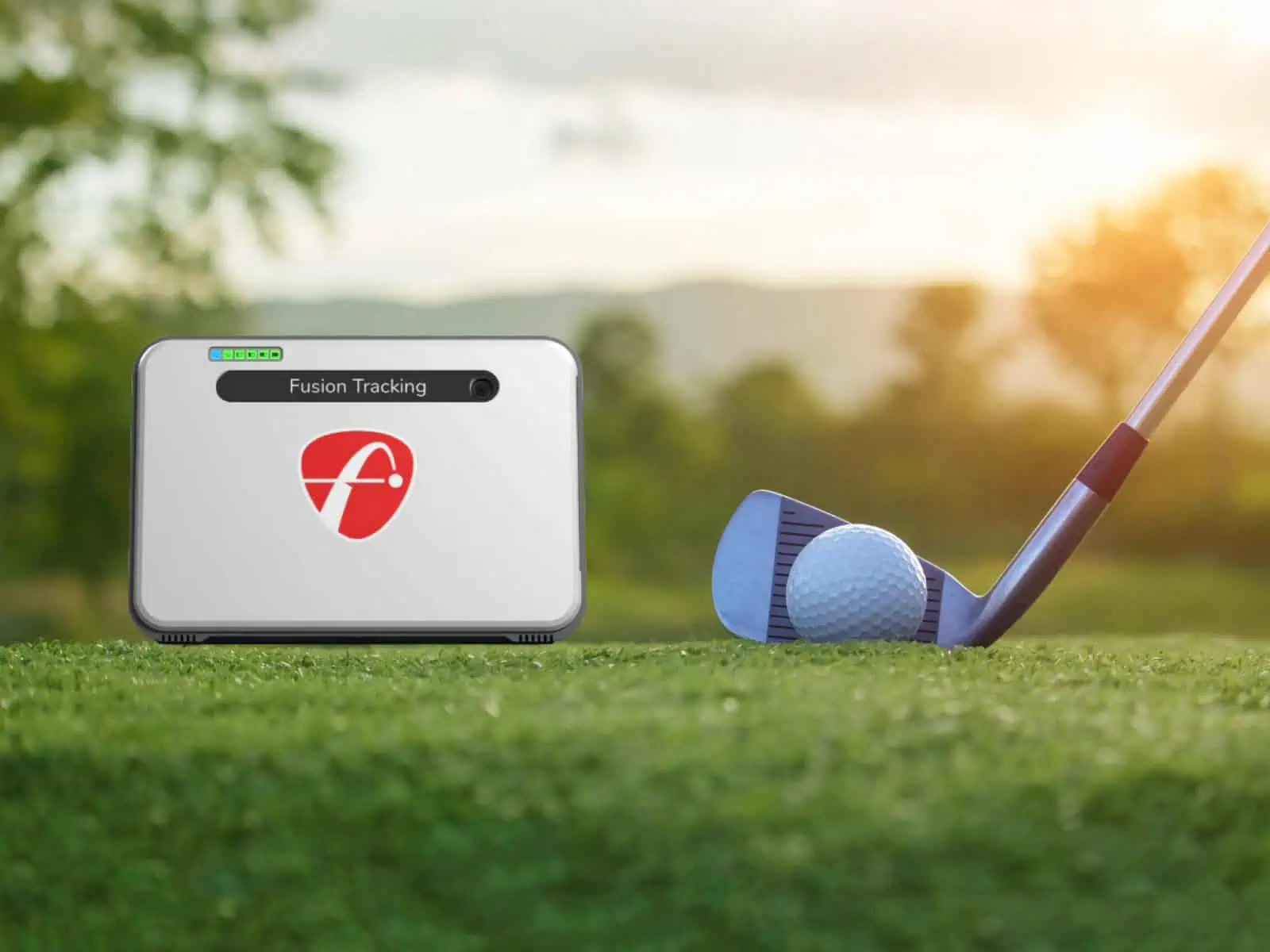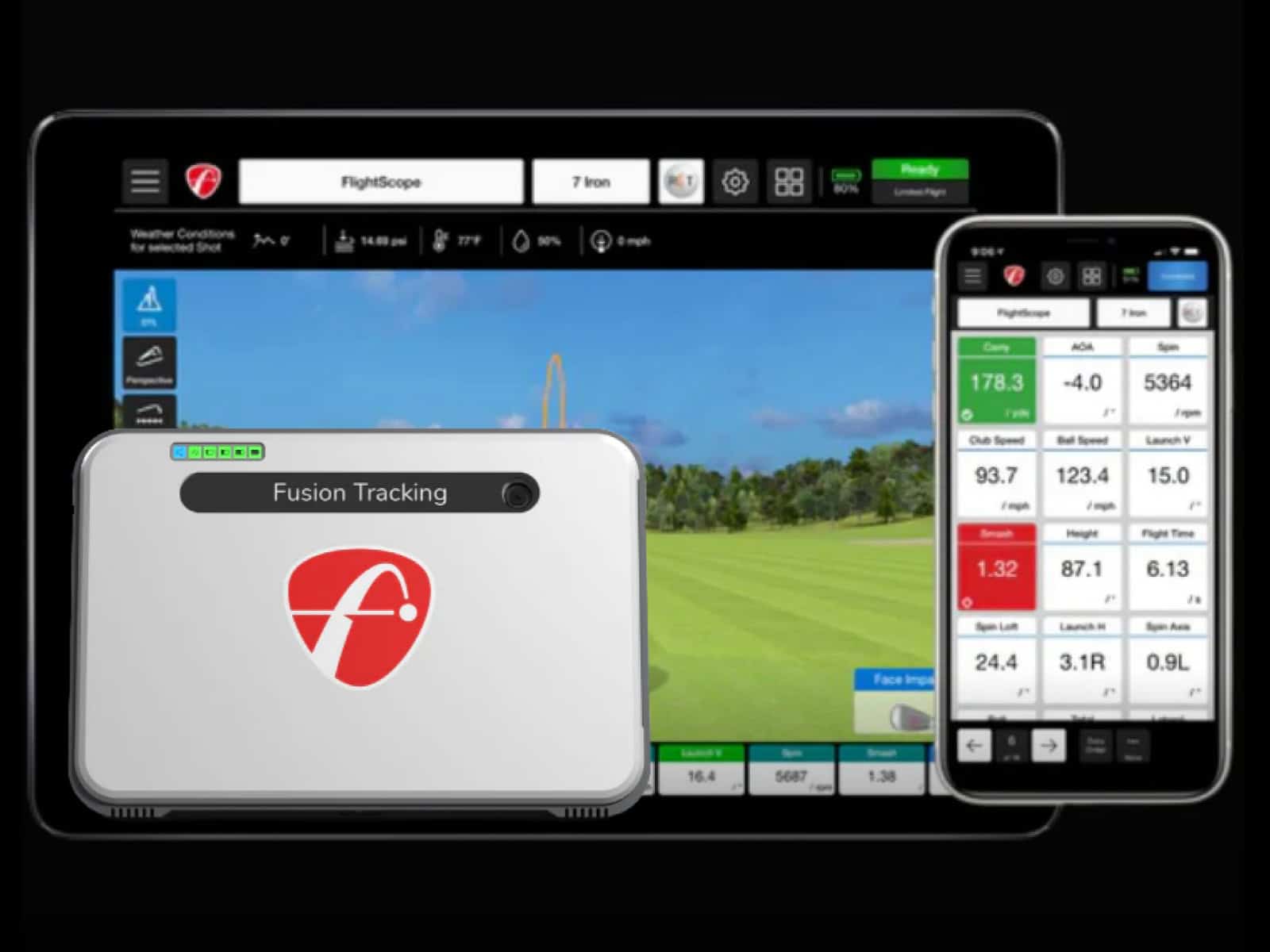In recent years, launch and golf simulators have revolutionized the way golfers analyze and refine their technique. However, despite their increasing popularity, many golfers still struggle to understand the key differences between these two powerful tools.
In this article, we will examine the unique features and benefits of launch monitors and golf simulators. By the end, you’ll have a clear understanding of which option best suits your needs to fine-tune your game and unlock your full potential.
So, let’s explore how these innovative devices can help you improve your golf game.
Golf Launch Monitors
Launch monitors have become indispensable tools for golfers seeking to improve their game. These high-tech devices provide a wealth of data about your swing and ball flight, allowing you to make informed decisions about your technique and equipment.
For a more in-depth exploration of launch monitors and their capabilities, see our article on golf launch monitors.
Purpose of Launch Monitors
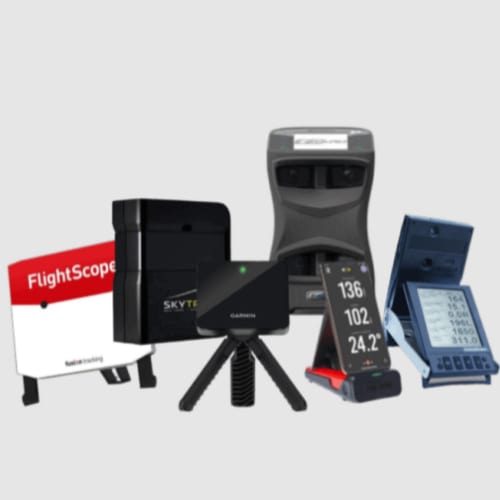
At their core, launch monitors are designed to capture and analyze the moment of impact between your club and the ball. They use advanced sensors, such as high-speed cameras or radar technology, to measure a range of variables that influence the trajectory and distance of your shots.
The primary purpose of a launch monitor is to provide objective, data-driven feedback on your performance. By quantifying aspects of your swing that are difficult to perceive with the naked eye, these devices help you identify areas for improvement and track your progress over time.
Types of Data Collected by Launch Monitors
Launch monitors collect a wealth of information about your shots, including the following:
Ball Speed
Ball speed refers to how quickly the ball leaves the clubface at impact. It’s a critical factor in determining the distance of your shots, as faster ball speeds generally result in longer carries.
Launch Angle
Launch angle measures the vertical angle at which the ball takes off from the clubface. Optimal launch angles vary depending on the club shot type, but generally, a higher launch angle will result in more carry distance, while a lower angle will produce more roll.
Spin Rate
Spin rate quantifies how quickly the ball rotates backward after impact. The right amount of spin can help the ball maintain its trajectory and land softly on the green, while too much or too little spin can lead to erratic flight paths and less control.
Carry Distance
Carry distance is the length the ball travels through the air before hitting the ground. This metric is particularly useful for assessing the effectiveness of your longer clubs, such as your driver and fairway woods.
By providing accurate, real-time data on these and other variables, launch monitors give you a clear picture of your strengths and weaknesses as a golfer. You can use this information to fine-tune your swing, experiment with different clubs and ball types and ultimately achieve lower scores on the course.
Portability and Outdoor Use
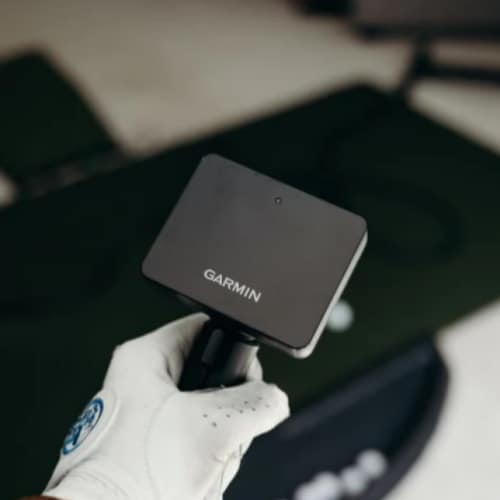
One of the key advantages of launch monitors is their portability. Most models are compact and lightweight enough to be easily transported to the driving range or even used on the course during practice rounds.
This flexibility allows you to gather data on your performance in real-world conditions, rather than being limited to an indoor setting. You can assess how factors like wind, elevation and turf conditions impact your shots and adapt your strategy accordingly.
However, it’s worth noting that some launch monitors may require additional setup time or calibration when used outdoors, and their accuracy can be affected by factors like sunlight and weather conditions. Be sure to consult your device’s user manual for guidance on optimal use in different environments.
Suggested Reading: The Best Portable Golf Launch Monitors
Golf Simulators
Golf simulators combine the data-gathering power of launch monitors with immersive virtual environments, allowing you to practice and play in a whole new way.
Definition and Purpose of Golf Simulators
At their core, golf simulators are designed to replicate the experience of playing on a real course. They use a combination of hardware and software to create a virtual golf environment, complete with realistic graphics, sound effects and ball flight physics.
The primary purpose of a golf simulator is to provide a convenient, accessible way to practice and play golf, regardless of weather conditions or time of day. A simulator can help you achieve your goals, regardless of your skill level.
Components of a Golf Simulator Setup
A typical golf simulator setup consists of several key components that work together to provide an immersive setting where you can improve your game.
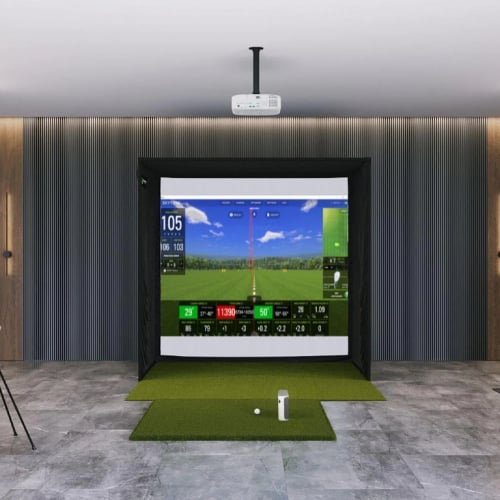
Launch Monitor Integration
At the heart of any golf simulator is a launch monitor, which captures data about your swing and ball flight.
This information is then fed into the simulator software, which uses it to generate a realistic virtual representation of your shot.
Hitting Screen and Projector
The hitting screen is where you’ll take your swings, and it’s designed to absorb the impact of your shots while providing a surface for the projector to display the virtual course.
The projector itself is responsible for creating the immersive visuals that make the simulator experience so engaging. If you wish to know more, you can check our detailed reviews of Golf Simulator Projectors for Different Budgets. For a higher-end experience, we have Reviews of 4K Golf Simulator Projectors.
Computer and Simulation Software
The computer is the brains of the operation, running the simulation software that brings the virtual course to life. This software is responsible for everything from rendering the graphics to calculating ball flight physics, and it’s evolving to provide an even more realistic and immersive experience.
We invite you to go through our Ultimate Guide to Computers for Home golf Sims as well as our in depth reviews of Gaming Laptops for Golf Simulator Use.
Simulated Golf Course Play and Practice Ranges

One of the biggest advantages of golf simulators is their sheer variety of virtual environments. Many systems come preloaded with dozens of famous courses from around the world, allowing you to test your skills on the same layouts as the pros.
In addition to full course play, most simulators also offer practice ranges and other training aids. You can work on your swing mechanics, experiment with different club and ball combinations and even participate in virtual tournaments and leagues.
Indoor Use and Space Requirements
Another key benefit of golf simulators is their indoor use capability. No longer do you have to worry about rain, snow, or extreme temperatures ruining your round. With a simulator, you can play anytime, anywhere, as long as you have enough space.
It’s important to note that golf simulators require a significant amount of room to operate properly. You’ll need enough space to swing your clubs freely, as well as space for the hitting screen, projector and other components. Be sure to measure your available space carefully before investing in a simulator setup.
To learn more about the topic, check out our Guide on Golf Sim Space Requirements.
Comparing Launch Monitors and Golf Simulators
Launch monitors and golf simulators are two popular options, but they serve different purposes and cater to different needs. Let’s go through the key differences between these two powerful tools.
Data Accuracy and Reliability
One crucial aspect to consider is the accuracy and reliability of the data provided by launch monitors and golf simulators. Launch monitors are designed specifically to capture and analyze ball flight data, such as ball speed, launch angle and spin rate. They use advanced sensors and algorithms to provide precise measurements, making them crucial for fine-tuning your swing and optimizing your equipment.
Golf simulators, on the other hand, prioritize recreating a realistic golf experience. While they do collect some ball flight data, their primary focus is on simulating golf courses and providing an immersive gameplay environment. The accuracy of the data may not be as granular as that of a dedicated launch monitor.
User Experience Immersion
A golf simulator is hard to beat if you’re looking for an engaging and entertaining way to practice golf. With high-quality graphics, realistic course layouts, and interactive features, golf simulators transport you to virtual fairways and greens. You can play famous courses from around the world, compete with friends and enjoy a round of golf regardless of the weather outside.
Launch monitors, while highly informative, offer a more straightforward user experience. They provide valuable data to analyze your swing and make improvements, but they don’t immerse you in a virtual golf environment. However, some launch monitors come with companion apps that offer video analysis and drills to help you put the data into practice.
Space Requirements and Setup

Another factor to consider is each device’s space requirements and setup process. Launch monitors are typically more compact and portable, making them ideal for use at the driving range or in your backyard. They often require minimal setup – just position the device near your hitting area, and you’re ready to start collecting data.
Golf simulators require a dedicated space, such as a room in your home or a commercial facility. They typically involve a hitting screen, projector and sensor system, which need to be properly positioned and calibrated. The setup process can be more involved, and you’ll need enough room to swing your clubs comfortably.
Cost and Affordability
When it comes to cost, launch monitors and golf simulators vary widely in price. Entry-level launch monitors can be relatively affordable (options for less than $1000), while high-end models with advanced features can come with a heftier price tag. Golf simulators, due to their more complex setup and immersive technology, tend to be more expensive overall.
Consider your budget and the features that are most important to you. If you’re primarily focused on data analysis and swing improvement, a launch monitor may be the most cost-effective choice. If you’re willing to invest in a more comprehensive golf experience and have the space for it, a golf simulator could be worth a splurge.
Targeted User Groups
Finally, it’s essential to think about your goals and the type of golfer you are. Launch monitors are ideal for serious golfers looking to fine-tune their swing, optimize their equipment and gain a competitive edge. They’re also valuable tools for club fitters and teaching professionals who need accurate data to help their clients improve.
Golf simulators cater to a broader range of users, from casual golfers who want to enjoy a round with friends to avid players looking to practice year-round. They’re perfect for golf enthusiasts who want to experience a variety of courses and keep their skills sharp, even when they can’t make it to the real greens.
Choosing Between a Launch Monitor and a Golf Simulator
Whether to invest in a launch monitor or a golf simulator comes down to many variables (including budget and space, explored above). Let’s break down the key factors to consider when making your choice.
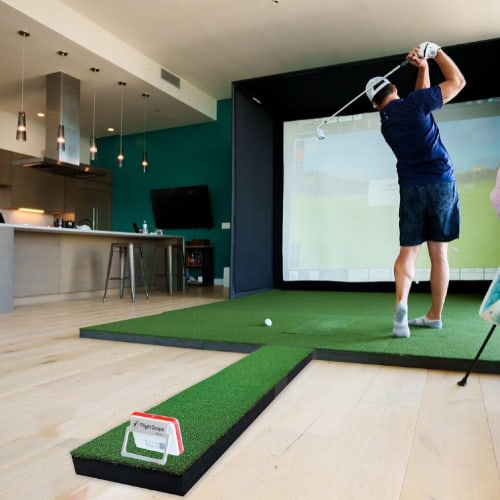
Evaluating the Importance of Data Analysis vs. Entertainment
A key consideration is the balance between data analysis and entertainment. If you’re a data-driven golfer who thrives on numbers and wants to dive deep into your swing metrics, a launch monitor is a better choice. You’ll have access to precise measurements that can help you identify areas for improvement and track your progress over time.
If you’re more focused on the overall golf experience and enjoying the game with friends, a golf simulator might be the way to go. Simulators’ main draw is the immersive, entertaining experience they offer. You can play virtual rounds on famous courses, participate in challenges and enjoy the social aspect of golf.
Combining Launch Monitors and Golf Simulators for the Ultimate Setup
Of course, you don’t necessarily have to choose between a launch monitor and a golf simulator. Many golfers find that combining the two creates the ultimate home golf setup. You can use the launch monitor for targeted practice sessions and swing analysis, which is then used as the basis for the software to play a virtual round or enjoy some friendly competition.
Please note that modern golf simulators are almost all based on launch monitors; these are in charge of tracking the metrics – the basis for the entire simulation process.
Frequently Asked Questions
Let’s tackle some common questions about launch monitors and golf simulators.
Can a Launch Monitor Be Used Outdoors?
Yes, many launch monitors are portable and designed for outdoor use. However, some camera-based photometric models may have trouble tracking ball flight in bright sunlight or windy conditions.
Do Golf Simulators Require a Projector and Screen?
Most golf simulators use a projector and screen to display the virtual golf course. However, the system can be hooked to any display device such as a large-screen TV.
Some practice packages even only use a hitting net, while the ball flight recreation is processed by the software on a portable smart device.
Are Launch Monitors Suitable for Beginners?
Launch monitors can be excellent tools for golfers of all skill levels, including beginners. They help identify areas for improvement and track progress over time. Many launch monitors have user-friendly apps that explain key metrics.
Can Golf Simulators Be Used for Club Fitting?
Yes, golf simulators can be valuable for club fitting. Many simulators have built-in club fitting features to provide detailed data on your swing and ball flight, helping fitters find the best clubs for your swing.
How Accurate Are the Data Readings from Launch and Golf Simulators?
Accuracy varies depending on the specific launch monitor or golf simulator. High-end launch monitors like TrackMan and Foresight Sports are known for their exceptional accuracy. Golf simulators based on high-end monitors are very accurate, too. There’s always some margin for error, but the data is typically accurate enough to help golfers improve their game.
We suggest going through our Detailed Guide On Golf Sim Accuracy.
Final Thoughts
Launch monitors and golf simulators are powerful tools that can elevate your game and provide endless hours of enjoyment. Launch monitors excel at providing accurate, detailed data on your swing and ball flight, while golf simulators offer an immersive, entertaining experience. If you’re considering starting a profitable golf simulator business, these technologies can be the foundation of a successful venture.
As you consider investing in a launch monitor or golf simulator, assess your personal needs and preferences. Think about your goals as a golfer, the space you have available, and your budget. With the right tools in your arsenal, you’ll be well on your way to becoming a better golfer and enjoying the sport like never before.
If you have questions or comments, please contact us.




